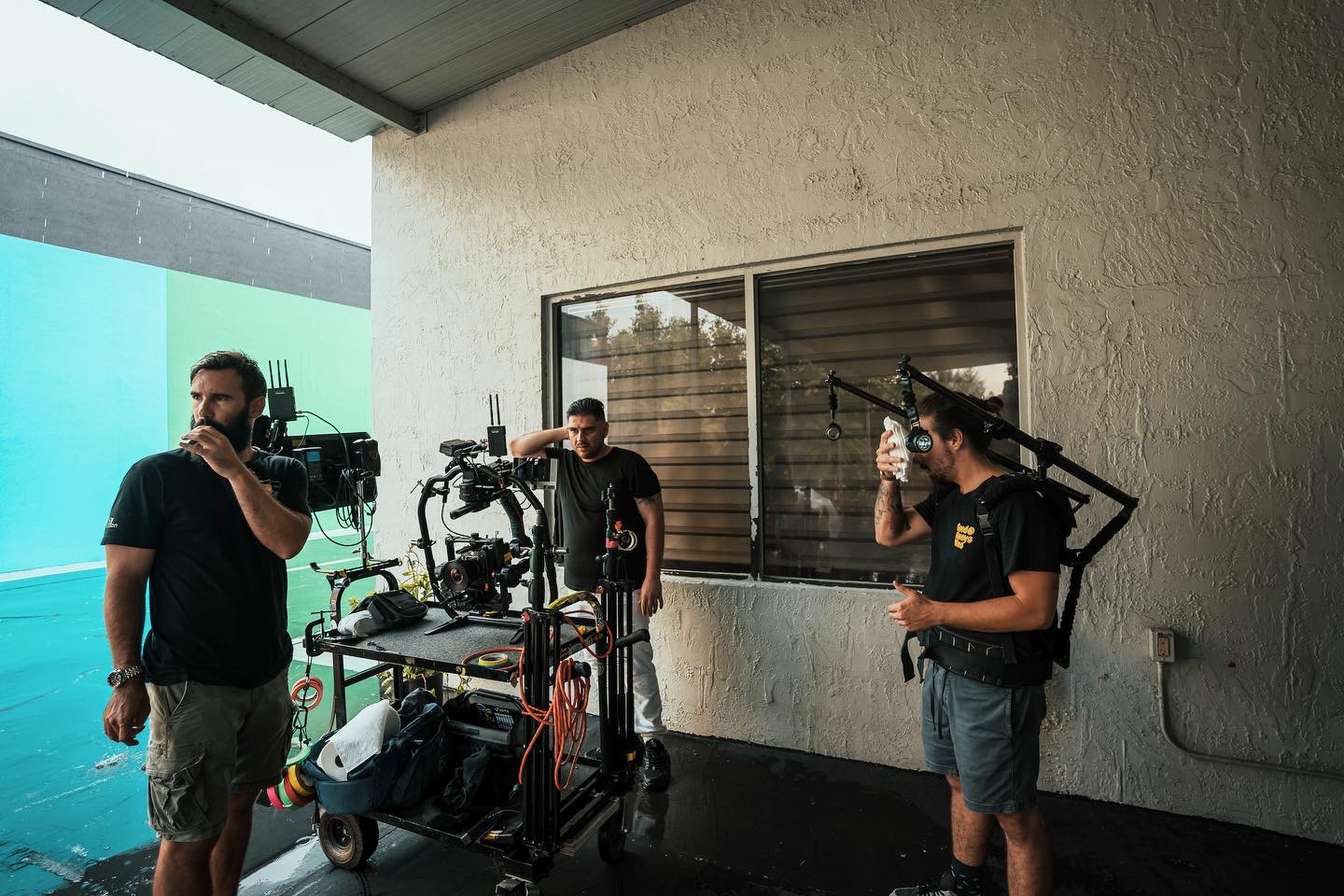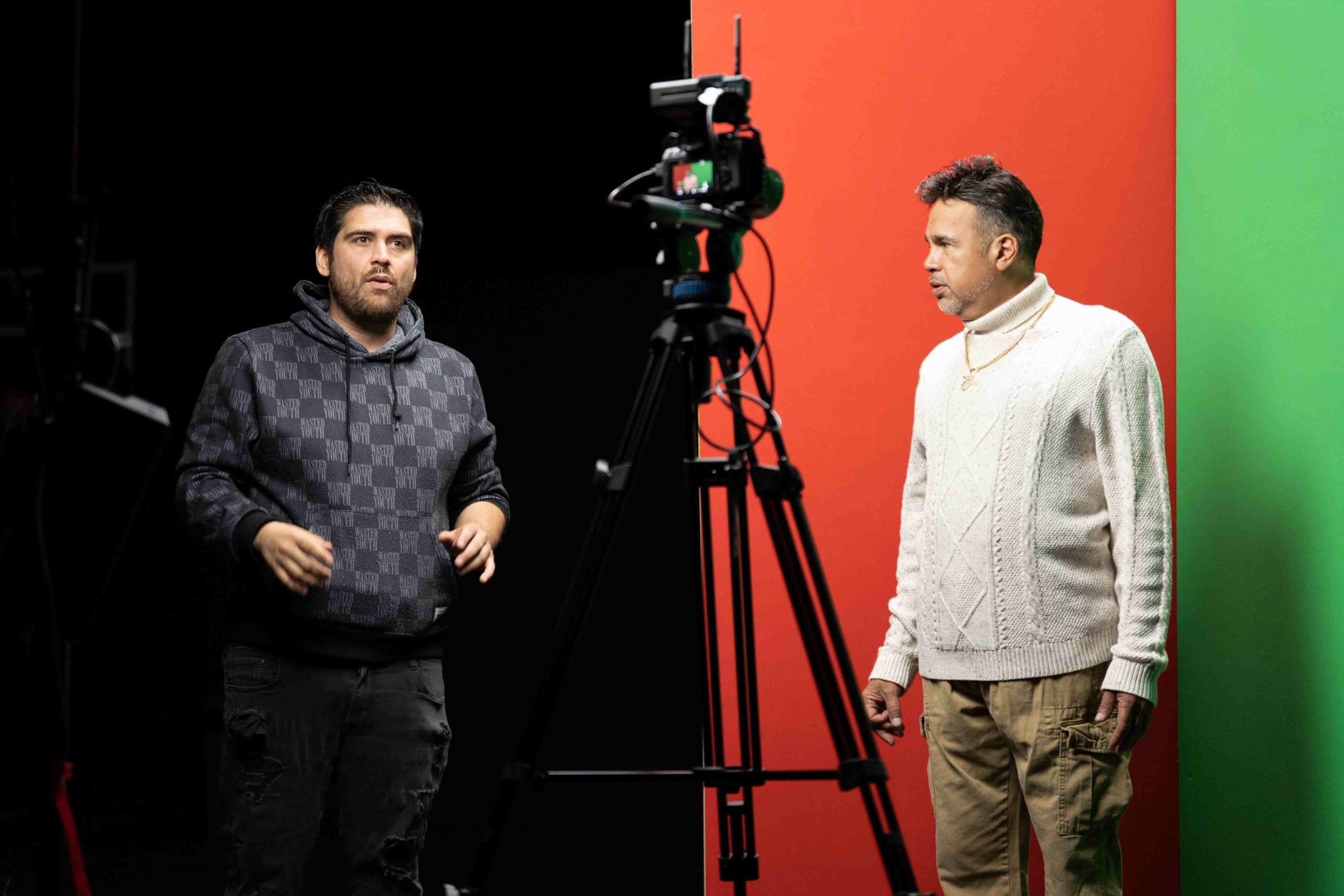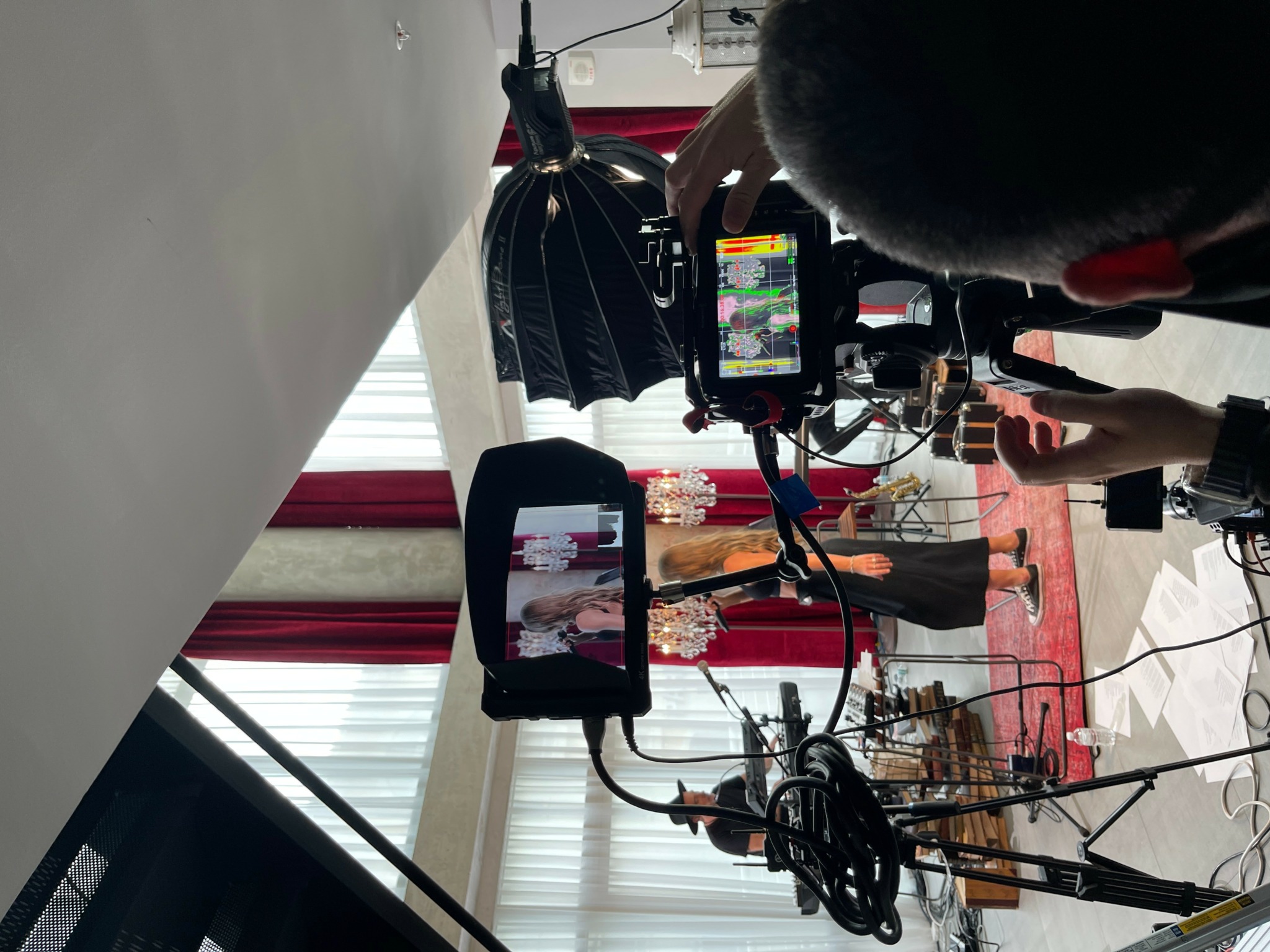We recently connected with Hely Bracho and have shared our conversation below.
Hi Hely, thanks for joining us today. Are you able to earn a full-time living from your creative work? If so, can you walk us through your journey and how you made it happen?
Yes, I’ve been fortunate to earn a full-time living from my creative work, but it wasn’t like that from day one. My journey started with a passion for storytelling and creativity, but turning that passion into a sustainable career took dedication, adaptability, and persistence.
Initially, I began as an artist, learning the ropes while balancing multiple roles to gain hands-on experience. One of my pivotal moments was transitioning into a producer and later establishing my own audio and film studios. These ventures not only allowed me to refine my craft but also taught me the business side of creativity—how to manage budgets, lead teams, and deliver quality content for clients.
Major milestones included collaborating with global brands like Bioderma and Coca-Cola, working on impactful projects like “Aprendo en Casa” during the pandemic, and producing music videos and documentaries for renowned Latin artists. These projects helped solidify my reputation and demonstrated my ability to manage large-scale productions while meeting tight deadlines.
The process wasn’t linear. I faced challenges like fluctuating income early on, building a network from scratch, and constantly needing to adapt to industry trends. However, those experiences taught me the importance of diversifying my skill set and client base. For example, my ability to handle all aspects of production—from conceptualization to post-production—became a unique selling point.
If I could speed up the process, I’d focus on a few key areas:
Networking early and often: Building relationships with collaborators and potential clients is invaluable.
Leveraging personal branding: Consistently showcasing my work and expertise on social media and platforms like LinkedIn could have opened doors sooner.
Investing strategically: Acquiring high-quality equipment early on allowed me to elevate my production value, but I would have prioritized this investment earlier in my career.
In retrospect, every challenge was a lesson that helped me grow into the multifaceted Creative Director I am today. It’s been a journey of continuous learning, but I wouldn’t trade the experience for anything.

Hely, before we move on to more of these sorts of questions, can you take some time to bring our readers up to speed on you and what you do?
I’m Hely, a Creative Director with over a decade of experience in filmmaking, broadcasting, event production, and music. My professional journey began as an artist, which evolved into producing and eventually establishing my own studios, where I could oversee every facet of audio and video production. Today, I specialize in creating compelling visual narratives that connect with audiences and elevate brands, artists, and influencers on a global scale.
I’ve had the privilege of collaborating with some of the biggest names in the industry, including Latin music icons like Jonathan Moly, Victor Drija, and SanLuis, as well as influencers like Marko and CesarNoJoda. One of my proudest accomplishments was producing the documentary Metamorfosis, which offered an intimate glimpse into Jonathan Moly’s life and creative process, featuring cameos from renowned Latin music stars. I’ve also directed over 30 music videos, including Mejor que Yo by Moly ft. SanLuis and Pelikulón by Victor Drija, each of which has left its mark on the Latin music scene.
In the world of commercial work, I’ve led impactful campaigns for global brands such as BIODERMA’s Enjoy Outside campaign, which spanned Bolivia, Peru, and Chile, as well as Coca-Cola’s live broadcast of Peru’s 2018 World Cup playoff match. Both projects showcased my ability to manage large-scale productions while delivering creative excellence. Additionally, during the pandemic, I collaborated with the Ministry of Education in Peru on the Aprendo en Casa initiative, helping over three million students continue their education remotely through innovative audiovisual content.
What sets me apart is my holistic approach to the creative process. I’m not just a filmmaker or director; I’m a storyteller who thrives on bringing visions to life. My experience spans every stage of production—from conceptualizing ideas to editing the final cut. I also own a comprehensive inventory of top-tier equipment, including drones, Blackmagic cameras, ultraprime lenses, and more, which enables me to provide high-quality services to my clients.
The problems I solve for my clients go beyond creating visually stunning content. I help them tell their stories authentically and connect with their audience on an emotional level. Whether it’s crafting a music video that captures the essence of an artist, producing a documentary that reveals untold stories, or creating digital content that amplifies an influencer’s brand, my goal is always to deliver work that resonates and drives impact.
What I’m most proud of is the diversity of my portfolio and the trust that artists, brands, and influencers have placed in me to bring their visions to life. My work isn’t just about creating; it’s about collaborating and building lasting relationships that result in memorable projects.
For potential clients, followers, or fans, I want them to know that I’m deeply passionate about what I do.

How can we best help foster a strong, supportive environment for artists and creatives?
In my view, society can best support artists and a thriving creative ecosystem by fostering a culture that values creativity not just as entertainment, but as an essential driver of innovation, connection, and progress. Here are a few ways this can happen:
1. Education and Early Exposure to the Arts
It starts with education. Schools should prioritize arts programs alongside STEM fields, recognizing that creativity and technical skills go hand in hand. Early exposure to music, film, writing, and other creative disciplines can inspire the next generation of artists while teaching problem-solving, critical thinking, and collaboration.
2. Accessible Resources and Infrastructure
Many creatives struggle because they lack access to tools, spaces, or platforms to bring their ideas to life. Society can support by investing in public spaces like maker labs, recording studios, art galleries, and performance venues. Subsidized access to professional equipment and mentorship programs can also make a huge difference for emerging talent.
3. Financial Support and Fair Compensation
One of the biggest barriers for creatives is financial insecurity. Governments, institutions, and businesses can play a role by offering grants, tax incentives, and residencies for artists. Additionally, there needs to be a cultural shift where creative work is valued and fairly compensated—no more “exposure” offers as a substitute for payment.
4. Celebrating Diversity in Art
A thriving creative ecosystem must embrace and celebrate diverse voices, styles, and perspectives. Society can support this by amplifying underrepresented groups in the arts and creating platforms that elevate voices from different cultural, gender, and socioeconomic backgrounds.
5. Collaboration Between Art and Industry
Businesses and artists should collaborate more. Brands and corporations can fund creative projects while benefiting from the fresh perspectives artists bring. At the same time, society should encourage art that critiques, questions, and pushes boundaries, rather than solely focusing on commercial value.
6. Cultivating a Supportive Digital Community
The internet has revolutionized how we share and consume art, but it’s also led to oversaturation and undervaluation. Society can help by supporting platforms that prioritize creators over algorithms. Fans can show support through crowdfunding platforms like Patreon or purchasing directly from artists, rather than relying solely on ad-supported models.
7. Recognizing Art as a Vital Profession
One of the most important shifts needed is the perception of art as a luxury versus a necessity. Artists are storytellers, historians, and changemakers. Supporting them means supporting cultural heritage, social progress, and human connection.

Is there something you think non-creatives will struggle to understand about your journey as a creative?
Absolutely. I think one of the most misunderstood aspects of a creative journey is the grind—especially during the times when you’re broke or feel like you’re swimming against the current. For non-creatives, it’s easy to see the polished final product, the glamorous moments, or the big-name collaborations and think it’s all smooth sailing. But what often goes unnoticed is the relentless hustle, the sacrifices, and the inner battles that come with pursuing a creative career.
There were many times when I was flat-out broke, questioning whether this path was worth it. I’ve worked long nights editing projects for clients who undervalued my work, spent weeks chasing invoices that barely covered my rent, and even debated if I should get a “stable” job just to stay afloat. But deep down, I knew I couldn’t abandon my passion—it wasn’t just what I did; it was who I am.
What non-creatives may struggle to understand is that being a creative isn’t just a career; it’s a calling. You create because you have to, not because it’s convenient. Even when the world doesn’t seem to value your work, or you’re eating instant noodles for the third night in a row, you keep going because there’s something inside you that refuses to quit.
There were times I had to invest in gear, software, or opportunities when I barely had enough to cover my basic needs. It’s a gamble that creatives make again and again, trusting that it will pay off someday. And eventually, it does. For me, it came through building relationships, staying consistent, and saying yes to projects even when they didn’t seem like a big deal at the time.
The irony is, the “breakthrough moments” often look effortless to outsiders. Like when I worked with Latin music legends or stood backstage with global stars. What they don’t see is the years of grinding it out in the background, the projects that flopped, the sleepless nights perfecting my craft, or the times I doubted myself.
If there’s one insight I can offer, it’s that success in the creative world isn’t linear. It’s messy, unpredictable, and full of highs and lows. But it’s also incredibly rewarding if you stick with it. For anyone reading this—whether you’re a creative or not—understand that behind every “overnight success” is someone who kept showing up, even when it didn’t make sense to.
For me, those tough moments taught me resilience, resourcefulness, and the power of believing in your vision even when no one else does. So, if you’re in the grind right now, embrace it—it’s the part of your story that will inspire others one day.
Contact Info:
- Website: https://plan360.tr3cestudios.us/en/
- Instagram: https://www.instagram.com/helydirector/
- Facebook: https://www.facebook.com/Tr3cestudios
- Twitter: helydirector
- Youtube: https://www.youtube.com/@4kstudiosusa

Image Credits
oscar mena
4k studios


